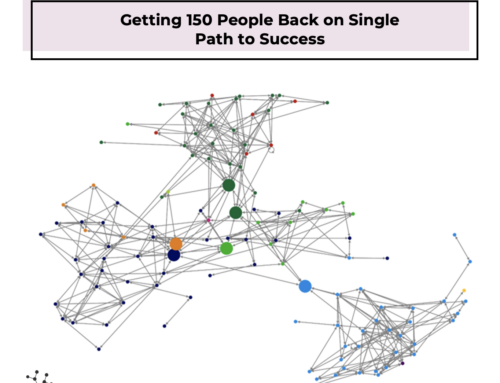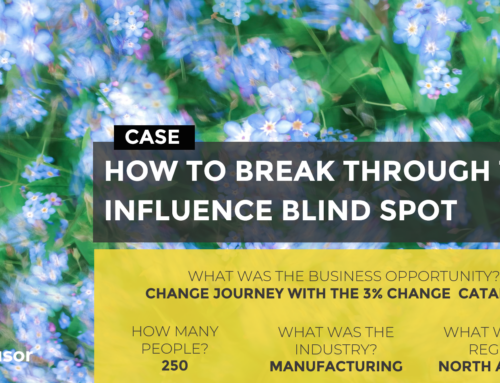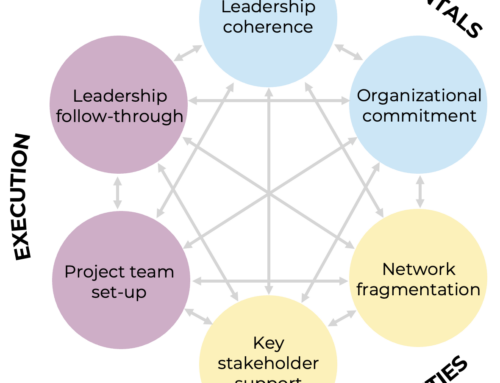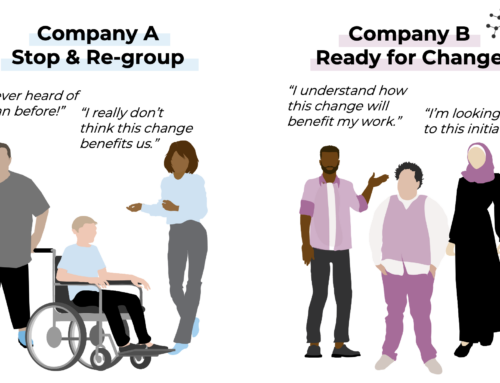A 180 on a Doomed Acquisition
A professional services organization Innovisor has worked closely with for many years acquired a firm a couple of years ago. This firm was adamant about keeping its distinct brand and culture. A 2022 analysis revealed that this firm was hardly connected to the functions and people of their new organization. This required interventions.
The organization needed to stop treating them as a separate firm.
They are a part of ONE organization. The organization’s project team needed to foster a sense of “we”, instead of “us” vs “them”. This would take time and intentional connectivity.
From “US” vs “THEM” to a collective “WE”
To counteract the separate management of the firm, the project team and leadership had to cease treating the acquired entity as a separate organization and, instead, emphasize its integral role within the larger organizational structure.
Recognizing the need for a cultural shift from “us” vs “them” to a collective “we,” the organization’s project team embarked on a journey to cultivate unity and collaboration. Intentional connectivity initiatives were implemented, aiming to bridge gaps and encourage cross-functional interactions.
Understanding the importance of respecting the new functions of the acquired firm while aligning them with the broader organizational objectives, the integration process was approached with patience. The project team invested time and effort in fostering relationships, acknowledging that a unified organization would be a gradual process.
Avoided a Fiasco in 13 Months
A year later, informal networks within the organization revealed a remarkable transformation. The once-siloed part of the organization now had strong cross-organizational relationships, across various functions and locations.
The precarious market that 2023 brought forced both sides to depend more on each other. This mutual dependence underscored the significance of building and nurturing cross-organizational relationships, fostering a sense of shared responsibility, and shared successes.
Crucially, the emphasis on cross-organizational relationships proved pivotal, as a majority of sales and large projects began originating from this integrated part of the organization. The success in collaboration became a cornerstone of the organization’s resilience in navigating the challenges of the market.
In Conclusion…
In just 13 months, the strategic interventions, coupled with external market pressures, resulted in a positive integration story, one that was heading toward fiasco just 13 months earlier. The once-disconnected firm transformed into a cohesive and collaborative entity. This integration not only bridged organizational gaps but also positioned the entity to thrive in a challenging business environment, showcasing the power of intentional connectivity and a unified organizational culture.







